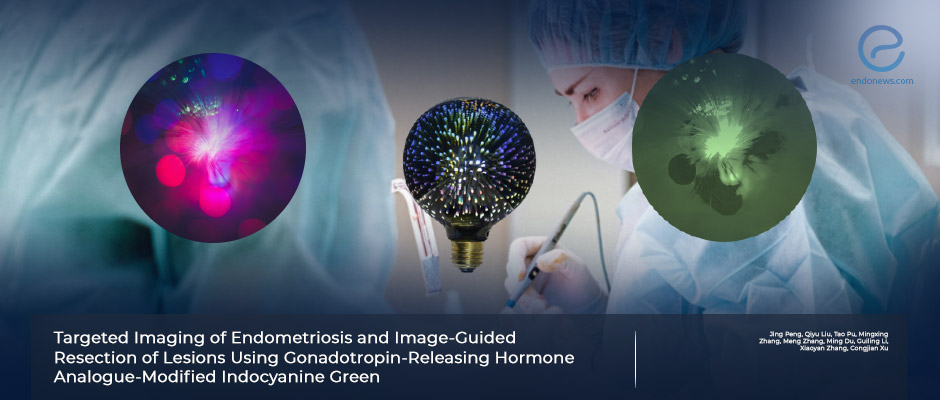A unique approach for visualising endometriosis during surgery
Feb 1, 2024
A new technique for visualization of the endometriotic lesions with gonadotropin-releasing hormone analog
Key Points
Highlights
- Endometriosis patients require surgical interventions but precise intraoperative lesion specification for excision is critical.
importance
- Imaging agents may be very much helpful in detecting endometriosis but indocyanine green is far from this goal.
- GnRHR is highly expressed in endometriosis suggesting its use as an imaging target.
What’s done here:
- GnRHR expression was detected in endometriotic tissues, hence to assess the possibility of its use as an imaging target is possible.
- Intraoperative imaging and the resection of endometriotic lesions were made in laboratory mice, along with investigating the biodistribution and safety of GnRHa-indocyanine in vivo.
Key results:
- GnRHanalogue-indocyanine specifically localized endometriosis and complete resection with high accuracy was possible.
- In comparison to the standard surgical approach under white light, targeted near-infrared fluorescence imaging-guided intervention completely resected endometriotic areas with a sensitivity of 97.3% and specificity of 77.8%.
Lay Summary
Dr. Jing Peng and associates from Shangai, China have made an experimental study on precise visualization of endometriotic lesions with gonadotropin-releasing hormone analog-modified indocyanine green, publishing their results in the Journal of Molecular Imaging.
Surgical interventions are important aspects of endometriosis and precise intraoperative specification and excision of lesions are critical.
Imaging substances are of utmost importance in this regard and methylene blue, 5-Aminolevulinic acid (5- ALA), and several others have been proposed during intraoperative visualization for endometriosis. Indocyanine green is approved, however, this fluorophore is far from being perfect for the task.
It is now well known that GnRHR is highly expressed in endometriotic tissues which raises the possibility of being an imaging target for endometriosis. The authors first detected GnRHR expression in endometriotic tissues and cell lines by several techniques. In vitro binding capacities of GnRHanalogue, GnRHanalogue-indocyanine green, and indocyanine alone were assessed by fluorescence and flow cytometry. In vivo imaging was performed in laboratory mice with a near-infrared fluorescence imaging system and fluorescence.
GnRHanalogue-indocyanine green exhibited a very much stronger binding to endometriotic lesions than indocyanine green alone. GnRHanalogue-indocyanine precisely showed endometriotic areas following intraperitoneal administration, starting at 2 h and a good signal-to-noise ratio at 48 h.
In comparison to standard surgical approaches under white light, targeted near-infrared fluorescence imaging-guided surgery yielded complete resection of endometriotic lesions with a sensitivity of 97.3% and specificity of 77.8%. Planned clinical trials with this unique application could be helpful in accurately resecting lesions to reduce the postoperative recurrence of endometriosis.
Research Source: https://pubmed.ncbi.nlm.nih.gov/38089464/
surgery endometriosis intraoperative visualization excision

